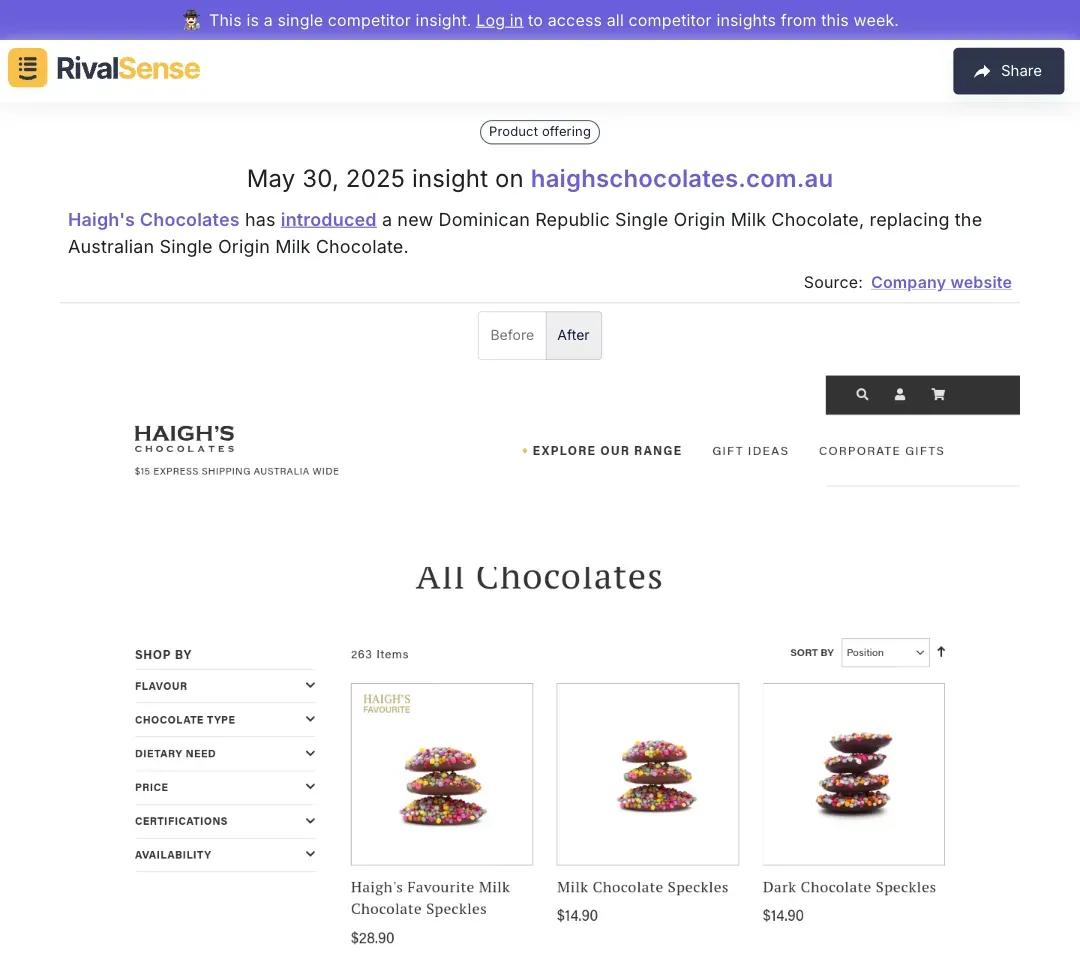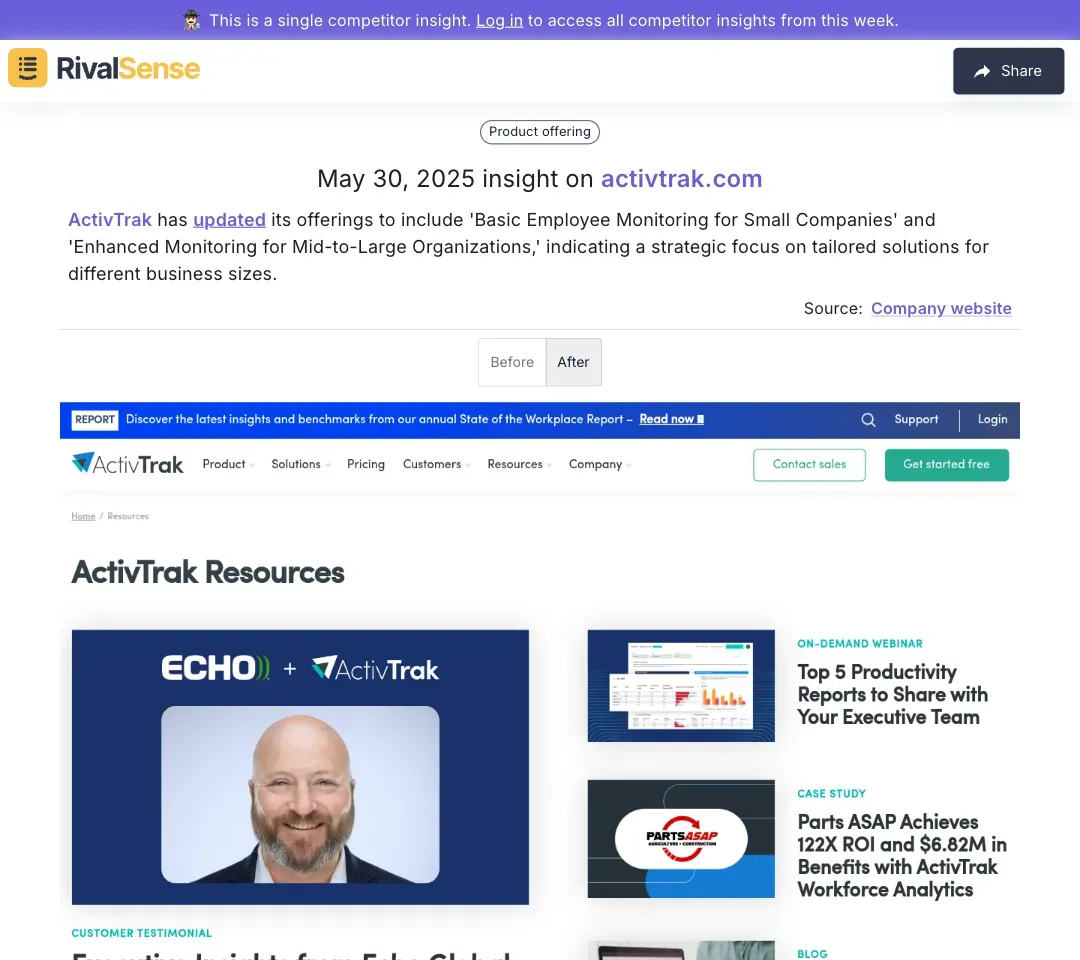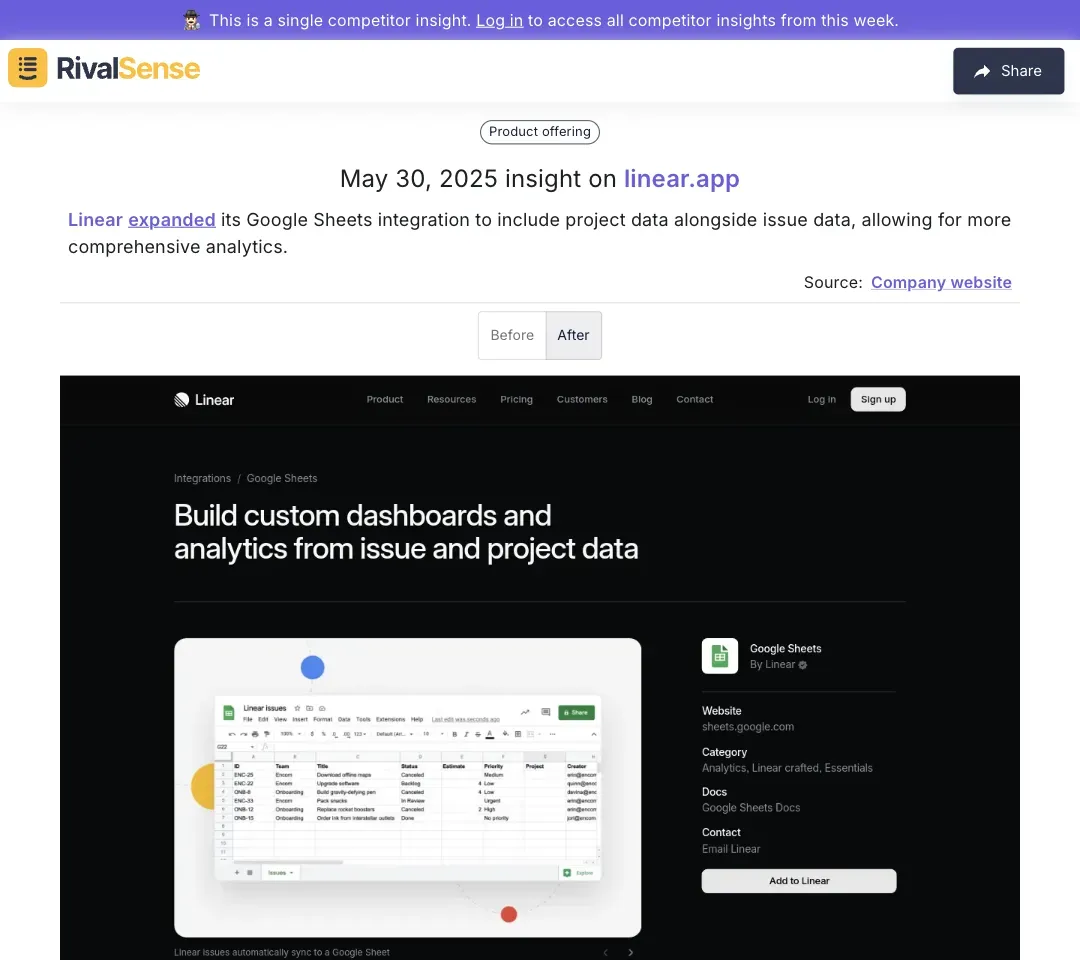Avoid These Mistakes When Analyzing Competitor Website Changes
In today's fast-paced business landscape, staying ahead requires more than intuition—it demands actionable insights from competitor activities. Analyzing website changes reveals strategic shifts like new product launches or market pivots, helping you anticipate industry movements. For instance, a sudden redesign or new service page might signal fundamental strategy adjustments worth exploring.
To leverage this intelligence effectively:
- Identify Competitors: Focus on your top 3-5 market rivals
- Set Up Monitoring: Automate tracking with specialized tools
- Analyze Updates: Categorize changes (pricing, features, testimonials)
- Act on Insights: Refine strategies based on findings
Systematic analysis transforms competitor movements into proactive opportunities for growth.
Mistake 1: Ignoring Product Line Changes
Overlooking product updates blindsides businesses to critical market shifts and emerging trends. These changes often signal supply chain adjustments, sustainability priorities, or new customer preferences.
For example, RivalSense detected that Haigh's Chocolates introduced Dominican Republic Single Origin Milk Chocolate while discontinuing their Australian variant. This insight is invaluable because it reveals ingredient sourcing shifts that may reflect broader industry patterns like ethical sourcing trends.

Action plan:
- Conduct weekly competitor website/product page audits
- Analyze the "why" behind changes (cost, demand, trends)
- Assess market impact: Does this create gaps or raise standards?
- Adapt offerings strategically using these insights
✅ Checklist:
- Track customer feedback on competitor changes
- Compare product evolution timelines
- Document ingredient/material substitutions
Mistake 2: Overlooking Segmentation Strategies
Neglecting how competitors segment offerings causes missed opportunities in understanding market targeting and expansion plans. Segmentation updates reveal strategic focus areas and audience prioritization that directly impact competitive positioning.
RivalSense captured ActivTrak's new tiered offerings: 'Basic Monitoring for Small Companies' and 'Enhanced Monitoring for Mid-to-Large Organizations'. This insight matters because it highlights how competitors tailor solutions for specific business sizes—exposing growth strategies and potential market gaps.

Practical steps:
- Map competitor tiers: Document features/pricing for each segment
- Identify audience fit: Which industries/sizes are they targeting?
- Compare offerings: Benchmark against your solutions
- Spot trends: Note shifts toward premium/entry-level tiers
🔍 Pro tip: Track segmentation changes quarterly to anticipate market repositioning.
Mistake 3: Underestimating Integration Enhancements
Dismissing integration upgrades as technical tweaks overlooks their strategic impact on customer retention and competitive differentiation. These enhancements often signal focus on user experience and ecosystem expansion.
When Linear expanded Google Sheets integration to include project data, RivalSense flagged this as a workflow-enhancing move. Such insights are crucial because integration improvements can significantly boost customer stickiness and attract new user segments.

Avoid this mistake by:
- Creating integration monitoring checklists (Slack, Zapier, CRMs)
- Setting alerts for competitor update logs
- Analyzing user feedback on enhancements
- Evaluating how upgrades affect your competitive advantage
📌 Key platforms to watch:
| Platform | Why It Matters |
|---|---|
| Productivity Suites | Reveals UX focus |
| Payment Systems | Signals checkout optimization |
| CRM Integrations | Indicates sales/marketing alignment |
Mistake 4: Failing to Analyze the Timing of Updates
Ignoring when competitors deploy changes causes missed strategic context around market events and internal priorities. Update timing often correlates with seasonal demand, regulatory deadlines, or earnings cycles—providing predictive insights.
For instance, frequent product page updates before Q4 may indicate holiday sales pushes. To leverage timing intelligence:
- Record exact update dates
- Identify patterns (quarterly, event-linked)
- Cross-reference with industry calendars
- Adjust campaigns based on predicted competitor moves
⏱️ Timing analysis checklist:
- Track frequency of pricing/page updates
- Note correlations with conferences or product launches
- Monitor regulatory filing deadlines
- Benchmark against your own deployment calendar
Conclusion: Best Practices for Effective Competitor Analysis
Avoiding these four mistakes transforms website monitoring from reactive observation to strategic forecasting. Consistent analysis of product changes, segmentation, integrations, and timing patterns builds actionable market intelligence. Remember to categorize changes, document trends, and integrate findings into quarterly planning cycles.
Continuous improvement framework:
- 🎯 Set competitor monitoring intervals (weekly/monthly)
- 🕵️♂️ Investigate the "why" behind major updates
- 📊 Benchmark against industry standards
- 🔄 Iterate strategies based on insights
Struggling to track these changes manually? Try RivalSense for free—get your first automated competitor report today. Monitor product launches, pricing shifts, integrations, and strategic pivots in one weekly digest.
📚 Read more
👉 Trend Analysis: Elevating Home Appliance Competitor Insights
👉 Decoding Competitor Pricing: A Strategic Workflow for Business Leaders
👉 Marketing vs. Business Strategy: How to Track Competitors Effectively
👉 Mastering Competitor Customer Success Analysis: A Step-by-Step Guide
